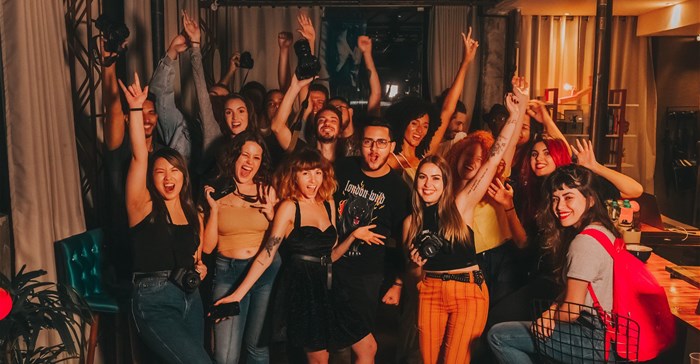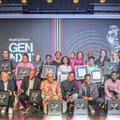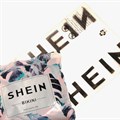Despite the shifting needs of the youth, what they want from brands has not changed. This was the finding of the Sunday Times GenNext youth behaviour report.

Source: © Matheus Bertelli
pexels Youth are creating their communities and brands need to fit into these, not the other way around
Nolitha Mkhwanazi, head of youth strategy at Yellowwood, says whether you look at 2021 or 2022, there are three main things the youth want from brands.
These are:
- Community involvement “A brand must be in the youth’s community. They must be visible. Community is my friend and family, so even if you are communicating directly with me, my friends must be talking about what you are doing, and my siblings and family must be talking about it,” she explains.
- Accessibility "This is around affordability, so, “the youth ask: Can I afford you? Are you available when I need it? Are you showing up in a way that resonates with me?” she says.
- Authenticity “The youth are asking a brand: Are you relevant, are you credible do you have a distinctive brand promise and are you communicating it in a way that will resonate with me?” says Brown.
A world failing the youth
The youth want these things from brands because they are feeling the world is failing them. “Covid and events, such as the flooding in KwaZulu-Natal, and ailing institutions (including government institutions), all contribute to this,” she says. However, what is interesting, she says, is the youth’s response.
“There has been a shift towards the youth asking: how can I improve and develop myself? how can I make myself better?”
Creating communities to learn
This has led to the youth creating communities to learn from each other. This does not only translate into them developing themselves but also into looking for other avenues to break the digital divide or wealth gap. For example, many youths have turned to cryptocurrency to break the wealth gap.
Showing up as an authentic brand
Too many brands go from one hashtag to the next cool thing without really looking at if this authentically communicates who it is as a brand and if young people will understand why it exists in this environment.
“Brands either try to create their own environments that they think young people will flock to or when it is in a situation such as an event where young people are, the brand is not showing up in a way that is authentic to who it is as a brand,” she says.
This is confusing the youth. “They are saying that we see you, you can be around me, but I still do not see how you are significantly impacting who I am as a person. and I am not clear what your brand stands for,” she explains.
To be authentic requires work. “You need to understand what is happening in culture but then make sure it is intrinsically linked to who you are as a brand. What your brand identity is, what makes your brand different and what your brand promise is.”
What brands need to do
To connect with the youth, brands need to:
- Have a deep understanding of their audience. We have our perspective of what the audience should be versus where the audience is. “Too often I hear marketers saying: when I was 13 this never happened. This is our challenge as marketers today. We are still thinking of ourselves and the time that we were growing up and then trying to infer that on young people.”
- Ensure you are culturally relevant. “At TBWA we see culture as competition because your ad is competing with whatever other thing(s) the youth want to do. But if you are presenting them with something compelling, that speaks to them and is relevant then you will stand out.”
Doing it well
The brand that does this well is Nike, and that is why they are still top of the list in the Sunday Times GenNext Awards. “This is because they based their ads on a fundamental human truth. People say it’s because they used Serena Williams but it’s the brand’s human understanding of what connects us that resonates. Williams only amplifies that message, even though I am not a tennis player,” she explains.
Locally she says Woolies has also been able to become the top grocer because it is clear in its purpose. “It has a very clear brand promise around the future making sure everything is sustainable and because young people are starting to care about the environment they are naturally moving towards the brand."
A dichotomy
This said, she admits that while the youth care about the environment, they still buy at Shein, despite the articles on Shein not being environmentally friendly.
“We need to be aware of that dichotomy that is happening with them; where they know this is the right thing to do but then their budgets dictate otherwise.”Looking forward to the next five years, Brown says the youth will remember how a brand treated them when they were younger, so brands need to solve the challenges that young people are experiencing now.
She adds too often we circle them - instead of dealing with what is limiting young people. “The youth will remember brands that were with them when they were struggling and stuck with them, so it is important that you are seen as helping them right now so that when they are successful, they still remember the brand that was with them all along.”






![Today, Halo and Demographica announce a new specialist agency, Second Rodeo]], headed up by Mike Stopforth (left). Dean Oelschig, managing partner and founder of Halo (right) says they will work as a group but ultimately, each agency will be an individual specialist](https://biz-file.com/c/2505/772543-240x130.jpg?2)






























![Today, Halo and Demographica announce a new specialist agency, Second Rodeo]], headed up by Mike Stopforth (left). Dean Oelschig, managing partner and founder of Halo (right) says they will work as a group but ultimately, each agency will be an individual specialist](https://biz-file.com/c/2505/772543-64x64.jpg?2)







